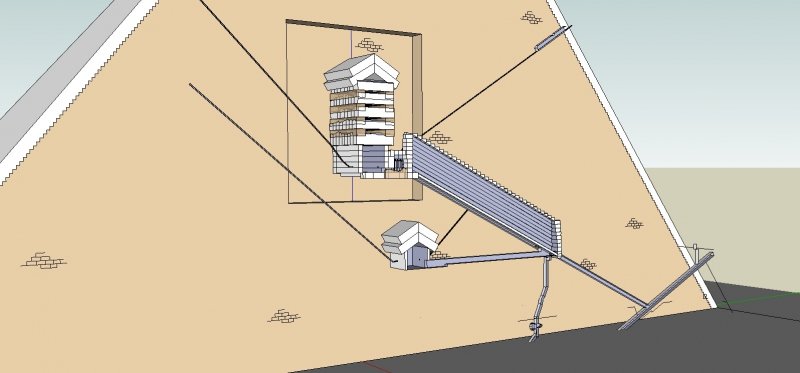Keep coal, nuclear as options for electricity
In the article in the July 22 Vindicator – “Killing Coal” – Bill Siderewicz of Clean Energy Future was concerned about recent discussions by President Donald Trump on supporting coal and nuclear electric generation. It would “send companies such as his running from Ohio” and “shatter Ohio’s competitive energy market.”
Why just Ohio? His plant will sell into the PJM power distribution market, which has 13 states and the District of Columbia.
The vast majority of electricity being used by all of these people comes from three almost equal electric-generation sources – nuclear, coal and natural gas. Currently there is no heavy reliance on only one fuel source. Could you imagine if we were too heavily vested in only natural gas to make most of our electricity?
If an extremely cold winter would hit or a major gas transmission pipeline were forced to shut down, the demand for natural gas would soar and so would its cost or, worse yet, we could experience electrical shortages perhaps causing brownouts.
It’s reassuring having alternate sources of electrical production like coal and nuclear to keep the overall price to customers stable and reliable.
As for environmental concerns, only nuclear energy comes without leaving a global-warming carbon footprint. Both gas and coal plants are fossil-fuel based.
As for jobs, it doesn’t take too many permanent employees to operate and maintain a gas pipeline and a gas power plant (maybe 30 people) as opposed to mining and delivering coal via trucks, railroad or barges and then operating an equivalent-sized coal plant (over 100 people I am sure). I certainly hate to see even more good-paying industrial jobs eliminated.
As a final overall thought, it’s understandable why a gas-plant operator such as Mr. Siderewicz would want to eliminate as much of the competition from coal as possible. The president of a gas-generation business should indeed try to increase his market share and hence profitability. But is it all that bad that we continue to use coal, nuclear and natural gas to provide our electric?
Joe Dulovich, Boardman
It really makes no sense to bail out coal industry
With regard to the article, “Killing Coal – Proposed energy policy could derail plans in Lordstown,” in the July 22 Vindicator, I have some thoughts.
When someone who voted for President Trump reacts to one of his policies by saying “this is so un-American,” you know it is truly a misstep. That is what Bill Siderewicz, president of Clean Energy Future, said about the Trump administration’s attempts to subsidize and bail out the failing coal industry.
The problem with bailing out coal is that it’s bound to continue to fail. No matter how much money President Trump throws at the coal industry, it’s still predicted to continue losing market share. Meanwhile, renewable energy is continuing to grow.
A report by Environment Ohio, says Ohio went from generating 1 GWh of solar energy and 15 GWh of wind energy in 2008 to 260 GWh of solar energy and 1,563 GWh of wind energy in 2017. With technological advances making wind and solar more efficient and affordable, this growth is inevitable.
Not only does renewable energy make sense to invest in economically, but it will also provide public-health and environmental benefits by reducing air pollution from burning fossil fuels.
U.S. Sens. Sherrod Brown and Rob Portman should listen to business owners in Ohio, like Siderewicz, and listen to predictions by economists, not coal lobbyists. They should fight the Trump administration’s current agenda and make smart, long-term investments in the growing renewable energy industry for Ohio and the rest of the United States.
Nancy Goodes, Columbus
Goodes is campaign organizer for Environment Ohio.
Privatizing water service can produce foul results
It’s unfortunate that Campbell City Council President George Levendis supports selling Campbell’s water plant to Aqua Ohio. No matter the results of the repair assessment, the city must be up-front about the risks and consequences of privatizing public water. If Campbell surrenders control of the water system to Aqua Ohio, that ultimately means local elected officials will have relinquished their ability to regulate rate increases.
A Food & Water Watch survey of the 500 largest water systems in the country found that in Ohio, people who are served by privately-owned water utility systems typically pay nearly twice as much as households with publicly owned water services. That 72 percent increase means $216 a year more out of households’ paychecks.
Corporations often charge more for worse service. They may cut corners, respond slowly to service requests or let existing infrastructure deteriorate in order to improve their short-term profits. When companies have monopolies on water service, there is little incentive to keep costs down.
These corporations are accountable to shareholders, not ratepayers, and make decisions according to what is best for the bottom line, not the public good.
Regional collaboration through a public-public partnership (PUPs) is the better option. In contrast to privatization, PUPs bring together public officials, workers and communities to provide better service for all users more efficiently. It means a more responsible, reliable, and most importantly, cost-effective system that allows communities to retain local control.
Water is a human right, and that means maintaining a water system that provide clean, affordable water and nothing less.
Amara Vogt, Chicago
Vogt is an organizing intern for Food & Water Watch.
Sexting reform should not be legislative priority
It was very unfor- tunate to read The Vindicator editorial (“Ohio Senate Should Act to Approve Sexting Bill,” July 23, 2018) pushing Ohio’s juvenile sexting bill, as that opinion mirrors the same misguided, counterproductive thinking continually coming from our Statehouse.
It is true prosecutors may, if they so wish, charge juveniles with serious sex offenses for engaging in sexting. I have no doubt most Ohioans oppose such harsh measures for youthful indiscretions. As a purported “solution,” House Bill 355 creates the brand new criminal offense, “Possession of Sexually Explicit Digital Material,” a first-degree misdemeanor.
HB 355 also establishes a court diversion program where those convicted of this new crime may receive education as to the consequences of sexting. If they complete the program, charges are dropped. However, absolutely nothing in HB 355 requires prosecutors or courts to utilize this proposed law or the diversion program as alternatives to the felony offense. They would only be options.
If legislators are so concerned about kids receiving harsh punishments for this behavior, the best path is to simply pass a bill removing such power – whether a felony or misdemeanor – from prosecutors and courts.
Likewise, any positive benefits from educating Ohio’s youth about problems arising from sexting do not require kids first getting busted for these actions. Believe it or not, such educational efforts already exist, and have nothing to do with the criminal justice system. Ohio legislators should work to expand these programs.
Sure, juvenile sexting raises some concerns. But HB 355 also begs the question of why Ohio politicians think they need to pass any laws to punish two 17-year-olds in a consensual relationship who send nude pictures to each other. Given Ohio’s numerous challenges, House Bill 355 is not how our elected officials should spend their time and energy.
Gary Daniels, Columbus
Daniels is chief lobbyist for the American Civil Liberties Union of Ohio.
















